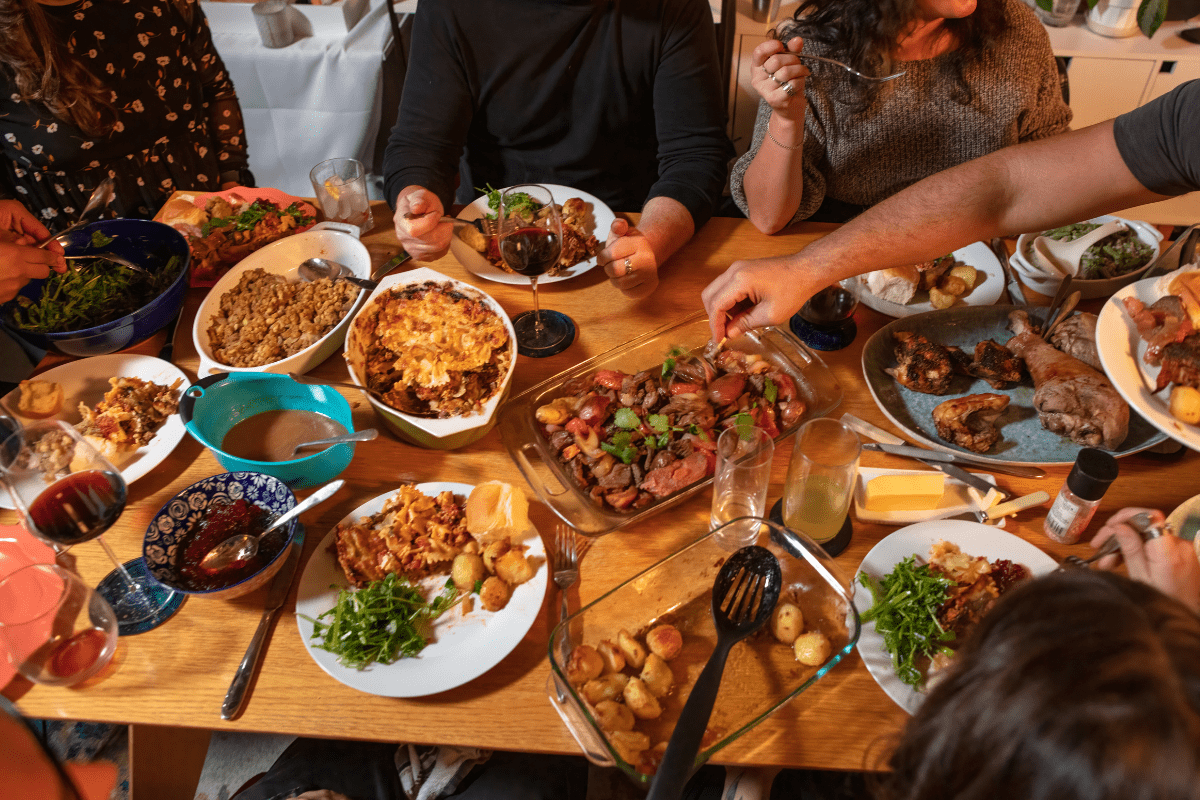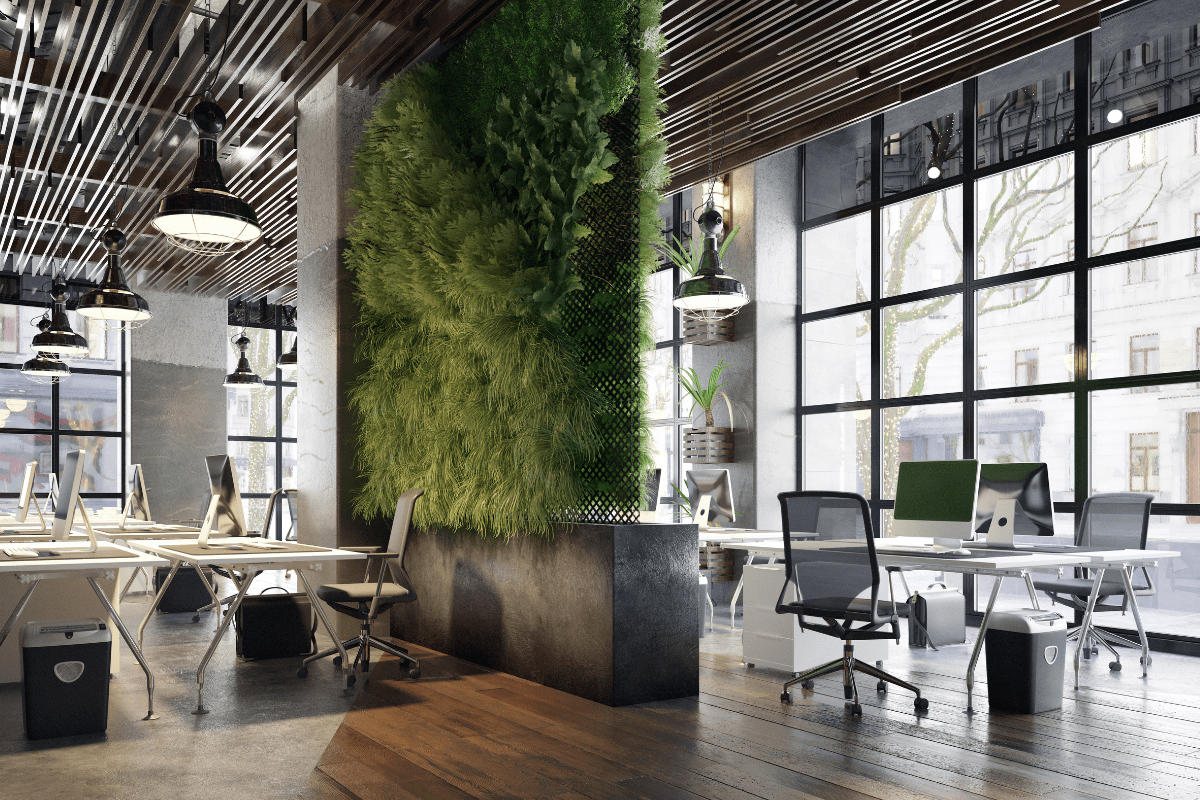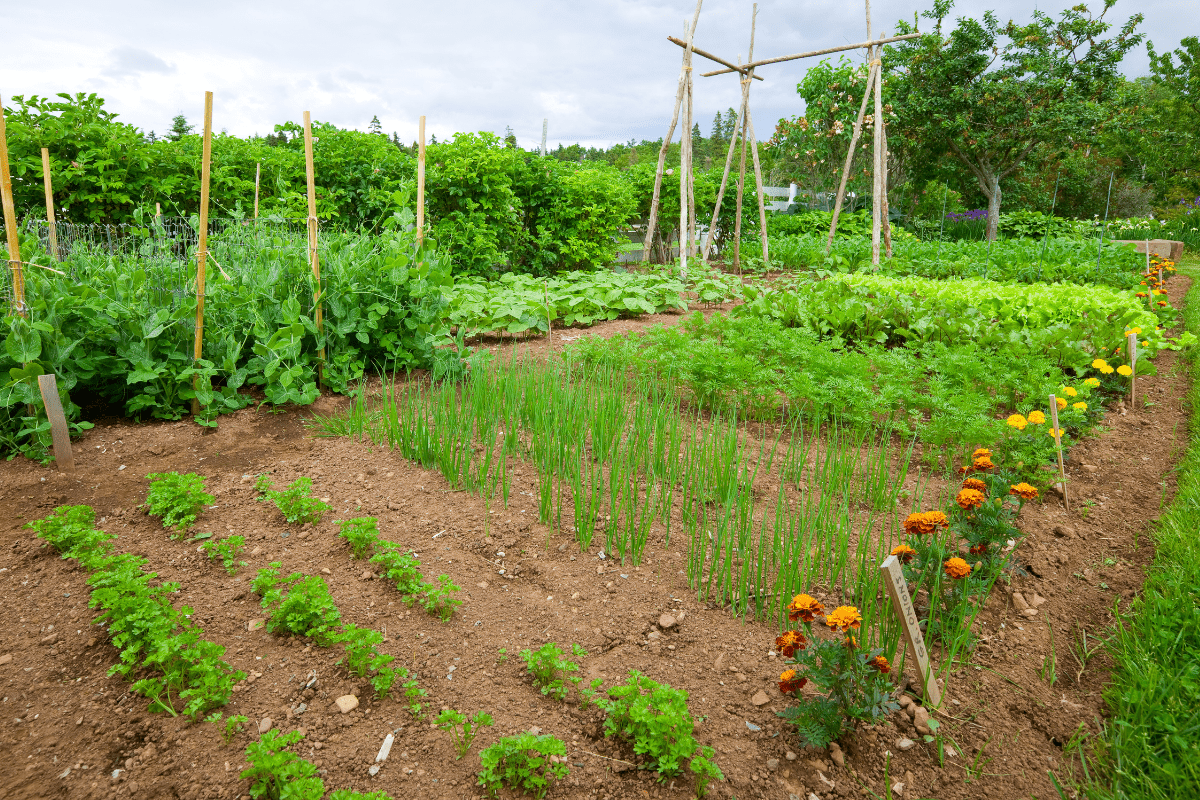Idaho doesn't usually top golfers' dream destination lists, but that's exactly why you should go. While everyone else battles crowds in Scottsdale, you could be teeing off next to a 200-foot canyon drop or taking a boat to reach a floating green that moves daily.
Northern Idaho's showstoppers will ruin other courses for you
Let's start with the course that gets all the Instagram love, and honestly, it deserves every filtered sunset photo.
The Coeur d'Alene Resort makes you take a boat to finish
Yes, the famous floating green is real, and no, your GPS won't help you find it because it moves. The 14th hole at Coeur d'Alene Resort features the world's only movable floating green, a 2,200-ton engineering marvel that shifts position daily via underwater cables. Depending on wind and the groundskeepers' mood, you'll face anything from a 90-yard pitch to a 220-yard prayer over Lake Coeur d'Alene.
The mahogany boat ride to the green (they call it "The Putter" because of course they do) feels wonderfully ridiculous. You'll get a personalized certificate for completing the hole, which sounds cheesy until you're framing it for your office. Peak summer green fees hit $290, but that includes a pre-round sports massage, which helps when you realize you're about to hit golf balls at a moving target.
Scott Miller's design stretches 6,803 yards, but distance becomes irrelevant when you're distracted by lake views from nearly every tee. The mandatory forecaddie service means someone else tracks your ball while you gawk at the scenery. Even the driving range floats—you hit biodegradable balls into the lake from an over-water deck, watching them bob away like tiny white boats.
Circling Raven earns every ranking without the attitude
While tourists flock to the floating green, serious golfers head 27 miles south to Circling Raven, which Golf Magazine named Idaho's top public course. The Coeur d'Alene Tribe owns this 620-acre masterpiece, and they've resisted the typical golf course money grab—no housing developments, no corporate nonsense, just golf through woodlands, wetlands, and native grasses.
Gene Bates designed 7,189 yards that feel honest rather than tricked-up. The slope rating of 144 tells you it's tough, but it's fair tough, not "lose twelve balls in hidden water hazards" tough. Thirteen holes dance with wetlands, creating risk-reward decisions that actually make sense. The signature 13th, nicknamed "Medicine Man," stretches 253 yards as a par-3, demanding you hit driver to a green that looks impossibly far away until you remember you're at elevation.
What sets Circling Raven apart is how it respects both the land and your time. Pace of play stays reasonable, the staff treats everyone like members, and the practice facility lets you warm up properly instead of rushing to the first tee. Green fees hover around $100 peak season, which feels like stealing for this caliber of course.
Black Rock hides Engh's masterpiece behind private gates
If you can wrangle an invitation to The Golf Club at Black Rock, cancel whatever else you had planned. Jim Engh's 2003 design earned Golf Digest's Best New Private Course honors, and walking it explains why Engh's courses look like nothing else in golf.
The 11th green sits between dramatic waterfalls that aren't just decoration—they affect your approach shot's trajectory. The par-3 13th features cascading water surrounding the green, turning a 150-yard shot into theater. Engh's signature "bobsled-run" fairways create speed slots that let you putt from 50 yards out if you find the right angle. It's architecture that rewards creativity over convention.
Getting on Black Rock requires knowing a member who likes you enough to sponsor a round. If you manage it, prepare for sensory overload—this isn't golf, it's performance art with flagsticks.
Sun Valley serves mountain golf three different ways
Sun Valley Resort runs three courses that share Robert Trent Jones DNA but play like different species entirely.
Trail Creek balances beauty with actual golf
Trail Creek, the resort's flagship, belongs on those "Top 75 Resort Courses" lists that Golf Digest loves publishing. The original 1937 routing got the full RTJ Jr. treatment in 1980, creating 6,968 yards that use Trail Creek as both hazard and soundtrack. Playing at 6,000 feet elevation means your 7-iron suddenly behaves like a 5-iron, which is fun until you airmail your first three greens.
Summer green fees range from $110 to $210 including cart, which sounds steep until you realize you're playing where Hollywood's golden age vacationed. Hemingway probably three-putted these same greens while nursing a hangover. The mature trees frame every hole without feeling claustrophobic, and the mountain backdrops make even your shanks look photogenic.
White Clouds proves nine holes can destroy you
Don't let the yardage fool you—White Clouds' 3,605 yards play like 5,000 when you factor in elevation changes and slope rating. Golf Digest calls it one of America's most challenging nine-hole layouts, which undersells how thoroughly it can humble you. The slope rating of 145 from the tips tells the real story.
Back-to-back par-5s on holes five and six include a 637-yard monster that climbs steadily uphill. You'll need three good shots just to reach the green, assuming the altitude doesn't leave you gasping. The former gun club property offers 360-degree mountain views of Bald Mountain, Pioneer Mountains, and Devil's Bedstead, names that sound made-up until you see them looming overhead.
Elkhorn showcases golf's greatest father-son project
Where else can you play nine holes by the father of modern golf architecture followed immediately by nine from his son? Elkhorn's front nine bears Robert Trent Jones Sr.'s strategic DNA—bunkers that frame rather than punish, greens that accept run-up shots, hazards you can see from the tee. The back nine shifts to Jr.'s philosophy, following a creek that threatens to swallow anything hit with too much draw.
The contrast between generations plays out over 7,214 yards defended by 100-plus bunkers. Since Sun Valley Resort acquired Elkhorn in 2011, they've improved conditions while keeping guest rates reasonable—figure $105 early season if you're staying at the resort.
Boise delivers quality without the trek to nowhere
Not everyone wants to drive three hours for golf, which makes Boise's scene surprisingly robust.
BanBury holds its own against any course statewide
BanBury in Eagle has maintained top-10 state rankings for 18 years, which in golf terms means it's doing everything right. John Harbottle III routed holes along the Boise River's South Channel, creating a layout where water stays visible but not obnoxious. The wildlife sightings—deer, foxes, more bird species than you can count—happen naturally because the course preserved habitat instead of bulldozing it.
Peak weekend rates hit $80, which for this quality feels like finding a twenty in your golf bag. The conditioning stays tour-level consistent, the practice facility actually helps you improve, and the staff remembers your name after two visits. It's the kind of daily-fee course that makes you question why anyone pays private club dues.
Shadow Valley climbs where no course should exist
Shadow Valley's front nine features 12 elevation changes carved from Boise's foothills, including a par-3 sixth hole that appears to have been dynamited from solid rock. C. Edward Trout designed holes that follow natural contours rather than forcing flat landing areas, creating shots you won't find anywhere else in Idaho.
The contrast between the climbing front nine and valley-floor back nine keeps you engaged for all 18 holes. Green fees run $47 weekdays and $66 weekends, which barely covers what they must spend on cart brake replacements. Desert landscapes and rock formations make every hole memorable, assuming you remember anything after surviving that sixth hole.
Warm Springs offers muni golf that doesn't feel municipal
Three miles from downtown Boise, Warm Springs proves city-owned doesn't mean neglected. Tree-lined fairways follow the Boise River through a layout that predates most of Idaho's golf boom. Weekend rates stay under $50, attracting everyone from scratch players to families learning the game.
The conditioning punches above its price point, the mountain views come free, and the mild Boise climate means you can play nearly year-round. It's the kind of unpretentious track where nobody judges your swing and everyone knows the 19th hole matters as much as the previous 18.
Hidden gems reward those willing to explore
Some of Idaho's best golf requires leaving the interstate, but that's rather the point.
The Links at Teton Peaks shouldn't cost this little
In Driggs, The Links at Teton Peaks delivers authentic links golf with Grand Teton views for $35 to $55, which sounds like a pricing error until you realize it's just Idaho being Idaho. David Druzisky's design incorporates Griffin Spring Creek through 14 holes while maintaining the firm, fast conditions that make links golf addictive.
Native cutthroat trout swim past while you line up putts. Moose occasionally stroll across fairways like they own the place (technically, they do). Dogs are welcome, which tells you everything about the atmosphere. It's golf stripped to its essence—wind, terrain, and decision-making without artificial complications.
Blue Lakes Country Club puts golf in a canyon
Twin Falls' Blue Lakes Country Club sits 476 feet below the Snake River Canyon rim, creating a microclimate that feels more Hawaii than high desert. The 1948 Francis L. James design includes a nationally recognized par-3 sixth where you tee off 200 feet above the Snake River, watching your ball fall forever before hopefully finding green.
The canyon walls, Perrine Bridge views, and spring-fed lakes create an almost surreal atmosphere. While technically private, the club welcomes accompanied guests, so make friends with a member or call ahead to arrange access. The experience justifies whatever social gymnastics required to get on.
University of Idaho proves college courses can compete
Moscow's University of Idaho Golf Course offers 6,701 yards for $45, embarrassing courses that charge twice as much for half the experience. The 1930s Francis L. James design expanded by Bob Baldock rolls through Palouse hills that create natural amphitheaters and blind shots.
"Heartbreak Ridge"—the three-hole finishing stretch—earned its name honestly. The terraced fairways and dramatic elevation changes would challenge any player, while the university arboretum setting adds botanical interest between shots. It's proof that great golf doesn't require premium pricing.
Sandpoint's golf scene flies under everyone's radar
Six courses within 50 miles of Sandpoint offer variety most destinations can't match. The Idaho Club features the state's only Jack Nicklaus Signature design, incorporating water on 16 holes while showcasing Moose Mountain views. An hour north, Priest Lake Golf Course earns "Hidden Gem" status through pristine wilderness settings that make you forget golf's manufactured nature.
The region stays crowd-free because most golfers don't realize it exists. Those who make the drive north discover courses that would anchor golf destinations elsewhere, hiding here in plain sight.
Planning your Idaho golf invasion
Success requires understanding Idaho's geography and seasons, unless you enjoy surprise snowstorms in June.
When to go depends on your tolerance for weather roulette
Idaho's golf season technically runs April through October, but "technically" does heavy lifting here. Northern destinations like Coeur d'Alene hit their stride in July and August when temperatures stay comfortable and rain becomes theoretical. Southern courses around Boise can break 90 degrees during peak summer, making early morning rounds essential.
September delivers the sweet spot statewide—comfortable temperatures, minimal crowds, and fall colors that make even bogeys beautiful. Courses start dropping rates after Labor Day despite conditions remaining pristine into October. The shoulder seasons offer value if you can handle weather variability:
- April-May: Possible rain, certain beauty
- June: Perfect until random cold front
- July-August: Peak everything including prices
- September: Ideal conditions and values
- October: Rolling the weather dice
Getting there requires actual planning
Spokane International Airport puts you 40 minutes from Coeur d'Alene's golf paradise. Boise Airport serves southern and central Idaho with surprising efficiency. Smaller airports in Hailey (Sun Valley) and Idaho Falls work if you're targeting specific regions.
Rental cars aren't optional—Idaho's best golf spreads across distances that make Uber drivers cry. Plan regional loops to minimize windshield time:
- Northern Loop: Spokane to Coeur d'Alene to Sandpoint
- Central Mountain: Boise to McCall to Sun Valley
- Southern Circuit: Boise to Twin Falls with Hagerman stops
Book tee times early for summer rounds at destination courses. Circling Raven and Coeur d'Alene Resort fill weeks ahead during peak season. Hidden gems stay accessible with 24-48 hour notice.
Where to stay shapes your entire trip
Resort properties offer stay-and-play packages that simplify logistics but lock you into their courses. Coeur d'Alene Resort packages include golf, lodging, and marina access. Sun Valley Resort bundles all three courses with accommodation options from lodge rooms to condos.
Vacation rentals near golf hubs provide flexibility for groups. Coeur d'Alene, Boise, and Sun Valley have robust rental markets with properties walking distance from courses. McCall and Sandpoint offer cabin rentals that put you in mountain golf territory while maintaining small-town charm.
Budget options exist near every major golf area. Casino hotels near northern courses offer surprising value. College towns like Moscow and Boise provide affordable lodging near quality golf. State park cabins put you in scenic areas with golf access—Farragut State Park sits between Coeur d'Alene and Sandpoint courses.
Why Idaho golf works when it shouldn't
Idaho succeeds by ignoring what golf marketing says matters. No celebrity endorsements, minimal corporate presence, zero attitude about handicaps or dress codes. Instead, you get courses that fit their landscapes, prices that make sense, and staff who seem genuinely happy you showed up.
The variety spans everything golf can offer. Links-style courses that belong in Scotland sit hours from mountain tracks carved from wilderness. Canyon courses that defy physics neighbor riverside layouts that flow like the water beside them. Each course reflects its environment rather than imposing some architect's ego onto the land.
Value propositions embarrass traditional golf destinations. Premium public courses charge what municipal tracks cost elsewhere. Hidden gems practically pay you to play. Even exclusive resorts price reasonably compared to similar quality in Phoenix or Palm Springs. Your golf budget stretches further while delivering experiences you'll remember longer.
The lack of crowds changes everything. Five-hour rounds become four-hour walks. Tee times exist when you want them. Practice facilities have space. Staff have time for actual conversation. It's golf before it became an industry, when courses existed for golfers rather than real estate developments.
Idaho's golf scene shouldn't work—too spread out, too far from major populations, too… Idaho. But that's exactly why it does. While other destinations optimize for profit, Idaho optimizes for golf. The result is pure, undiluted golf experiences that remind you why you fell in love with this ridiculous game.
Pack your clubs and point them toward Idaho. Your Instagram followers might not recognize the courses, but your golf soul will thank you. Just remember to leave time for the 19th hole—Idaho's craft beer scene deserves its own article, preferably researched extensively.





